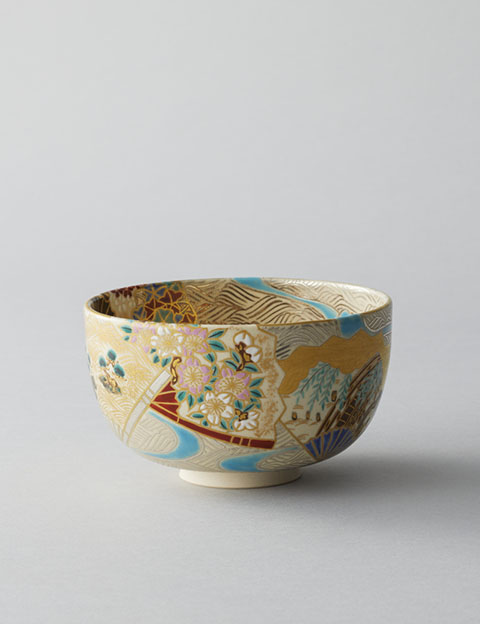KYO-KIYOMIZU Yaki (Ceramics)

Although Kyoto-Kiyomizu Wares precede the Heian era (794-1185), the making of pottery began in earnest when the capital of Heian-kyo (modern-day Kyoto) was founded in 794. Since that time, Kyoto has been home to many famous potters and the birthplace of many fine pieces.
Famous potters including Ninsei and Kenzan were at work in the 17th century, and in the 19th century the potter Eisen successfully fired porcelain, while the masters Mokubei, Hozen and Ninami were also remarkably active in the same century. Great advances were made toward the end of the 19th century when German ceramists were invited to come to Kyoto and introduced techniques from around the world.
The sheer beauty and craftsmanship of the more labor-intensive Kyoto-Kiyomizu Wares have a strong traditional feel, while other pieces impart an aura of freshness that matches contemporary life. Each piece has its own place and manages to maintain a unique ambience. The range of pottery and porcelain made in Kyoto today is almost beyond comprehension, but quality tableware for use at home and in the best Japanese restaurants is the most dominant product. Many pieces are also still made for use in tea ceremony. Incense burners are humbler and yet equally elegant.
Feature
Elegant, delicate and elaborate pieces created with an emphasis on tradition accompany more innovative pieces for modern living, while both maintain a unique ambiance and tone.
How to make
Because the necessary raw materials, including porcelain stones and pottery clay, cannot be found in the Kyoto area, they are imported from Amakusa in Kumamoto Prefecture and Shigaraki in Shiga Prefecture, and have to be modified according to the objects that will be created. After the raw materials have been reduced to a clay-like state, molded, dried and given each its distinctive finishing, the different articles are then dried and bisque-fired. Next, after the under glaze decorations have been applied, they are glazed and then completed by kiln-firing them. If color is used, an over glaze is applied after kiln-firing and the products are completed by baking the overglaze decorations.

